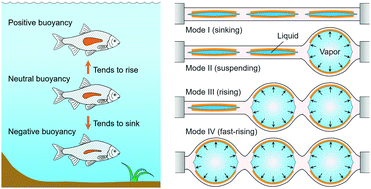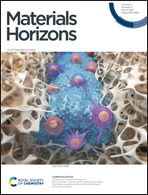Robotic soft swim bladder using liquid–vapor phase transition†
Abstract
The swim bladder is crucial to underwater robots to enhance their overall performance and to expand their range of motion. However, previous attempts to incorporate this function have failed or have adopted mechanical swim bladders with high-disturbances. This study presents an entirely soft swim bladder capable of controlling buoyancy selectively and noiselessly, making it applicable to sensitive underwater environments. The soft swim bladder, which consists of an elastic cover layer, flexible heating elements, and three expandable pouches filled with low boiling point fluid, can express four modes of motion by varying buoyancy: sinking, suspending, rising, and fast-rising. The varying buoyancy is achieved through liquid–vapor phase transition of the fluid in the selected pouches when Joule heated above its boiling temperature. Moreover, the swim bladder is integrated with a shape memory alloy-based fishtail to form a soft fish robot. The synergy between the bladder and the tail allows the robot to explore a total of ten disparate modes of maneuvers, and their dynamic performance has been evaluated. The results of this study present the potential for the soft swim bladder to be utilized in any underwater robotic applications to enhance their swimming performance.



 Please wait while we load your content...
Please wait while we load your content...